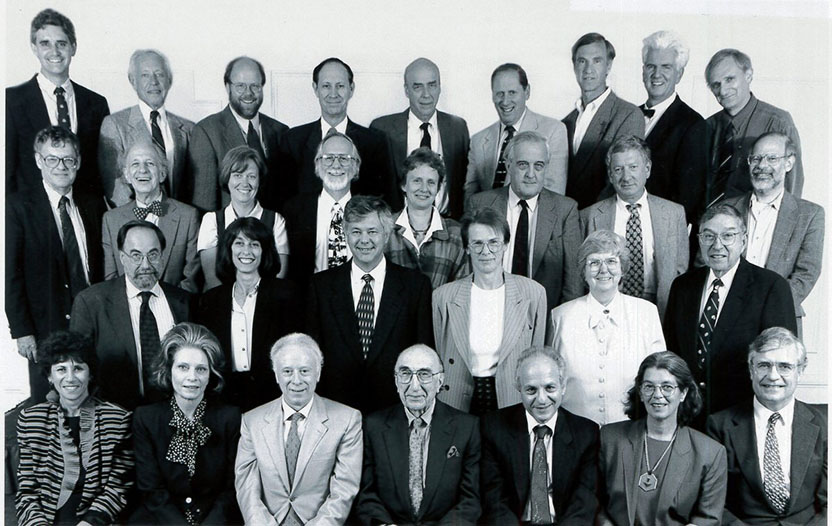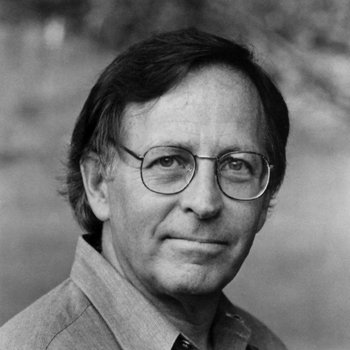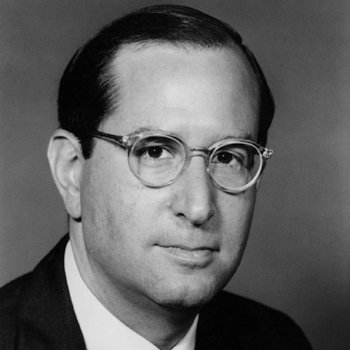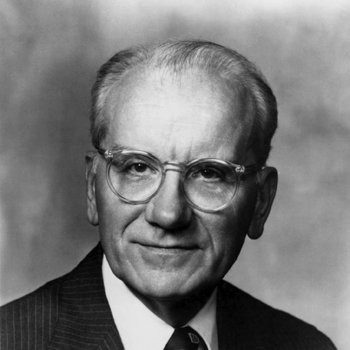Opening remarks by Joseph Goldstein
 Joseph Goldstein] In an interview on BBC Radio in London, Francis Crick was asked, “What is the key to scientific success?” His reply went something like this: “Be bold and adventurous. Make bold theories and take a bold approach to experimentation. Don’t get bogged down in details. Think big and adventurously.”
Joseph Goldstein] In an interview on BBC Radio in London, Francis Crick was asked, “What is the key to scientific success?” His reply went something like this: “Be bold and adventurous. Make bold theories and take a bold approach to experimentation. Don’t get bogged down in details. Think big and adventurously.”
The recipient of this year’s Lasker Basic Research Award, Mark Ptashne, passes Crick’s boldness test with flying colors. When Mark began his scientific career 35 years ago, Jacob and Monod had just advanced the theory of gene regulation by repressors. Identifying repressors became the Holy Grail of molecular biology. An understanding of repressors would tell us how genes are turned on and off in response to hormones, growth factors, drugs, and other environmental signals. Many scientists searched for repressors, including Jacob and Monod, but in the end only two scientists had the “bolds” to complete the job: Walter Gilbert working on the lac operon repressor defined by Jacob and Monod, and Mark Ptashne working on the repressor of a tiny virus that infects bacteria called bacteriophage. Mark isolated the repressor in 1967. He showed that it was a protein that specifically bound to a small stretch of DNA. These experiments earned Mark a full professorship at Harvard at age 31. Mike Brown and I had to wait until we were 36 to become full professors—and that was at the University of Texas Southwestern Medical School, not Harvard!
Jury

1997 Lasker Medical Research Awards Jury
Front Row, left to right: Neen Hunt, Executive Vice President, Albert and Mary Lasker Foundation (Non-Voting Member of the Jury) ● Mrs. William McCormick Blair, Jr., Vice President, Albert and Mary Lasker Foundation (Non-Voting Member of the Jury) ● Joseph Goldstein, Chair of the Jury, University of Texas Southwestern Medical Center ● Michael DeBakey, Chair Emeritus of the Jury, Baylor College of Medicine ● Jordan Gutterman, University of Texas MD Anderson Cancer Center (Non-Voting Member of the Jury) ● Anne Fordyce, Vice President, Albert and Mary Lasker Foundation (Non-Voting Member of the Jury) ● James Fordyce, President, Albert and Mary Lasker Foundation (Non-Voting Member of the Jury)
Second Row, left to right: David Baltimore, California Institute of Technology ● Laurie Glimcher, Harvard University School of Public Health ● Michael Brown, University of Texas Southwestern Medical Center ● Philippa Marrack, Howard Hughes Medical Institute ● Mary Ellen Avery, Harvard Medical School ● Morton Swartz, Massachusetts General Hospital
Third Row, left to right: Charles Stevens, The Salk Institute ● Eric Kandel, Columbia University ● Shirley Tilghman, Princeton University ● J. Michael Bishop, University of California School of Medicine ● Suzanne Cory, The Royal Melbourne Hospital ● David Weatherall, John Radcliffe Hospital ● Alfred Gilman, University of Texas Southwestern Medical Center ● Ira Herskowitz, University of California School of Medicine
Fourth Row, left to right: Bruce Stillman, Cold Spring Harbor Laboratory ● Leon Rosenberg, Bristol-Myers Squibb Company ● Edward Harlow, Massachusetts General Hospital Cancer Center ● Arthur Rubenstein, The University of Chicago ● Donald Brown, Carnegie Institution of Washington ● William Paul, National Institutes of Health ● Don Wiley, Harvard University ● Günter Blobel, The Rockefeller University ● Martin Raff, University College London



